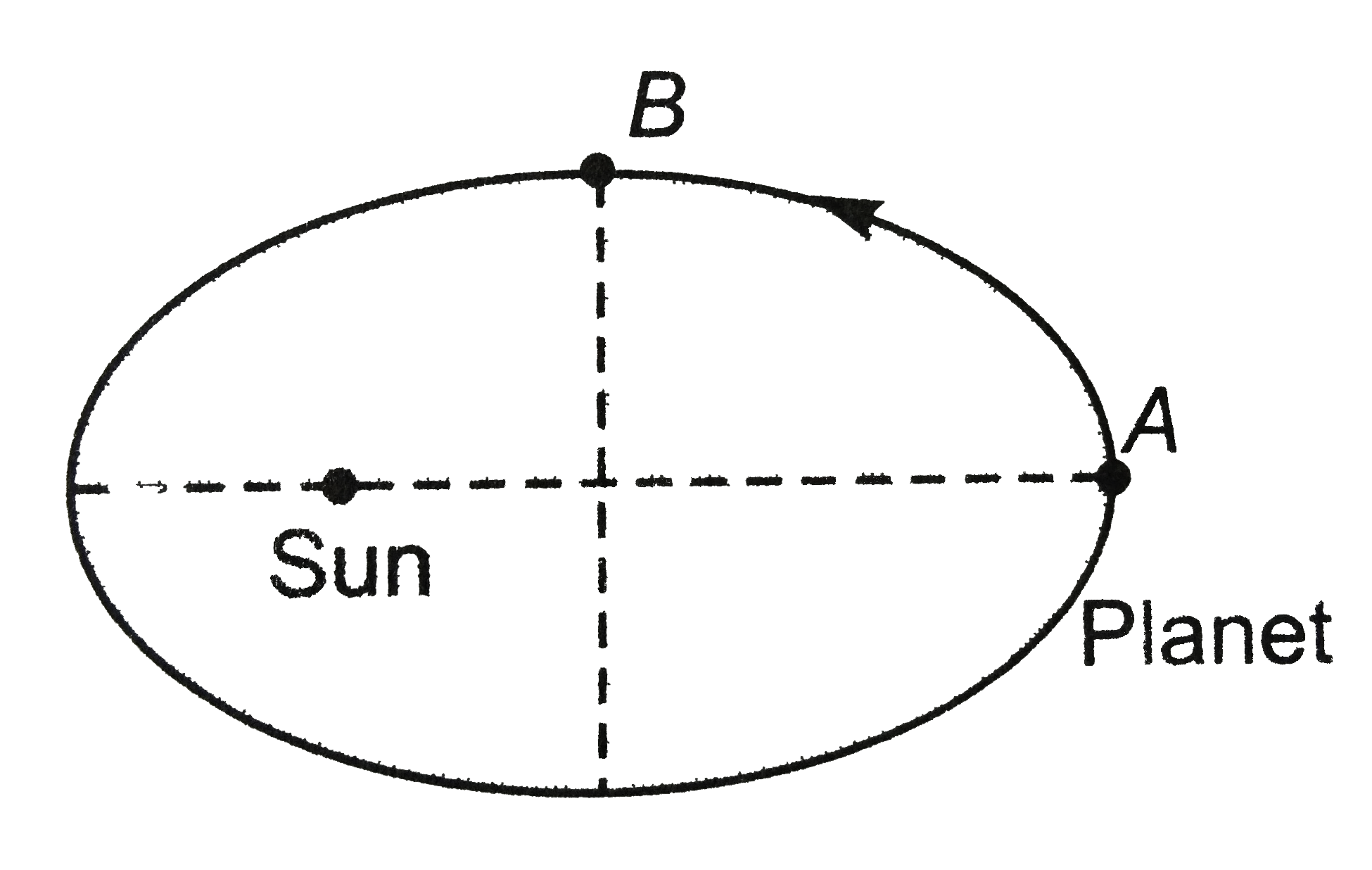The angular momentum of a planet of mass M moving around the sun in an elliptical orbitis →L. The magnitude of the areal velocity of the planet is :
2LM
4LM
LM
L2M
To find the magnitude of the areal velocity of a planet moving in an elliptical orbit around the sun, we can follow these steps:
1. Understanding Areal Velocity:
Areal velocity is defined as the area swept by the radius vector (line connecting the sun and the planet) per unit time. According to Kepler's second law, this areal velocity is constant for a planet in orbit.
2. Angular Momentum:
The angular momentum →L of a planet of mass M moving in a circular path at a distance R from the sun with a velocity v is given by:
→L=M→R×→v
The magnitude of angular momentum can be expressed as:
L=MRvsin(θ)
where θ is the angle between the position vector →R and the velocity vector →v.
3. Finding the Area Swept:
The area dA swept out in a small time interval dt can be approximated as the area of a triangle formed by the radius vector and the path of the planet:
dA=12×R×(v⋅dt⋅sin(θ))
Here, v⋅dt is the small displacement of the planet during the time interval dt.
4. Calculating Areal Velocity:
The areal velocity dAdt can be derived from the expression for dA:
dAdt=12Rvsin(θ)
5. Relating Areal Velocity to Angular Momentum:
From the expression for angular momentum L=MRvsin(θ), we can substitute Rvsin(θ) in terms of L:
Rvsin(θ)=LM
Therefore, substituting this into the areal velocity equation gives:
dAdt=12LM
6. Final Expression for Areal Velocity:
Thus, the magnitude of the areal velocity H is:
H=L2M
Final Answer:
The magnitude of the areal velocity of the planet is:
H=L2M
Areal velocity is defined as the area swept by the radius vector (line connecting the sun and the planet) per unit time. According to Kepler's second law, this areal velocity is constant for a planet in orbit.
The angular momentum →L of a planet of mass M moving in a circular path at a distance R from the sun with a velocity v is given by:
→L=M→R×→v
The magnitude of angular momentum can be expressed as:
L=MRvsin(θ)
where θ is the angle between the position vector →R and the velocity vector →v.
The area dA swept out in a small time interval dt can be approximated as the area of a triangle formed by the radius vector and the path of the planet:
dA=12×R×(v⋅dt⋅sin(θ))
Here, v⋅dt is the small displacement of the planet during the time interval dt.
The areal velocity dAdt can be derived from the expression for dA:
dAdt=12Rvsin(θ)
From the expression for angular momentum L=MRvsin(θ), we can substitute Rvsin(θ) in terms of L:
Rvsin(θ)=LM
Therefore, substituting this into the areal velocity equation gives:
dAdt=12LM
Thus, the magnitude of the areal velocity H is:
H=L2M
The magnitude of the areal velocity of the planet is:
H=L2M
Similar Questions
Knowledge Check
A planet of mass m is moving around the sun in an elliptical orbit of semi-major axis a :
AThe total mechanical energy of the planet is varying periodically with timeBThe total energ of the planet is constant and equals −GmMs2a,Ns is mass of sunCTotal mechanical energy of the planet is constant and equals −GmMsa,M2 is mass of sunDDate is insufficient of arrice at a conclusionA plantet is moving round the sun in an elliptical orbit as shows. As the planet moves from a to B
 Aits kinetic enargy will decreaseBits potential energy will remain unchangedCits angular momentum about centre of sun will remain unchangedDits speed is minimum at A
Aits kinetic enargy will decreaseBits potential energy will remain unchangedCits angular momentum about centre of sun will remain unchangedDits speed is minimum at AAll the planets move around the sun in
Acircular pathBrectangular pathCelongated elliptical pathDnone of the above
All the planets move around the sun in an _________
View SolutionA planet is revolving round the sun in an elliptical orbit. Of the following the property which is a constant during the motion of the planet is :
View SolutionFor a planet moving around the sun in an elliptical orbit, which of the following quantities remain constant ?
View SolutionA planet is revolving around the sun in an elliptical orbit. Which out of the following remains constant.
(a) Linear speed (b) angular momentum
( c) kinetic energy (d) potential energy (e) total energy throughout its orbit.
View SolutionConsider a planet moving in an elliptical orbit around the Sun. The work done on the planet by the gravitational force of the Sun
View Solution
